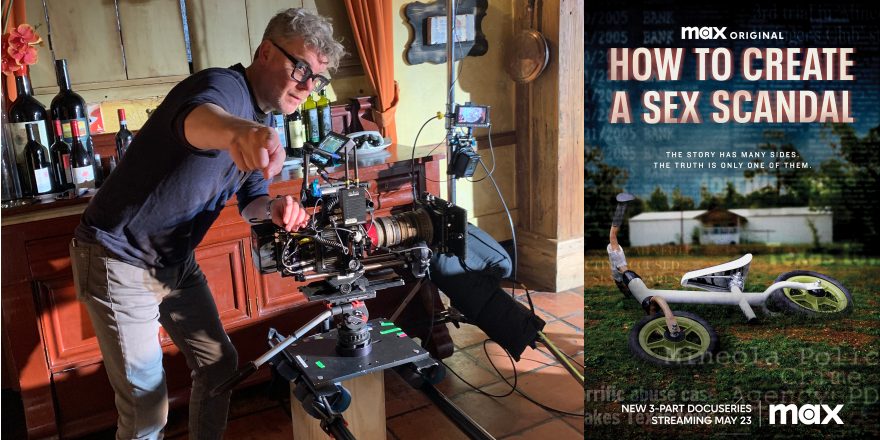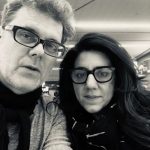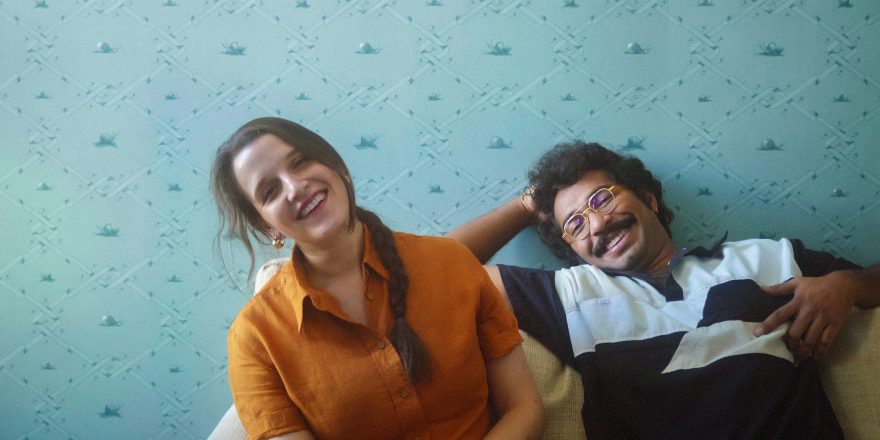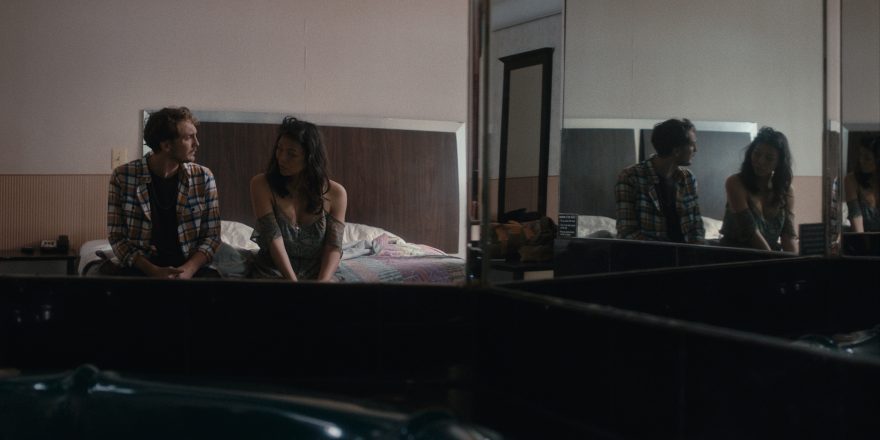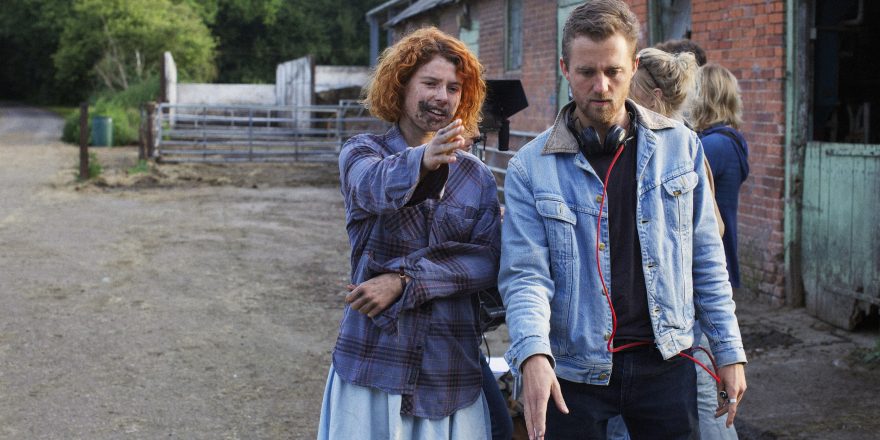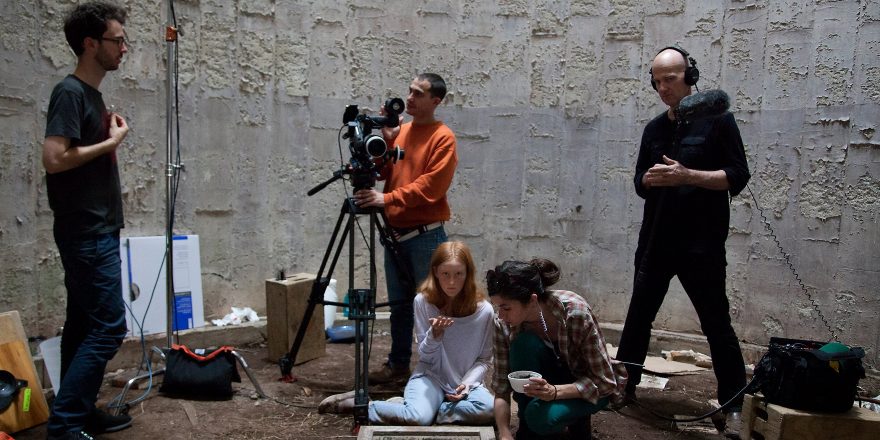Julian and Elli:
In 2005, the East Texas town of Mineola was thrown into turmoil when local children revealed shocking stories about a pedophile sex ring that operated out of a local swingers club. A community demanded accountability, arrests were made and life sentences were handed down. But it soon became apparent that there was a lot more to the story than meets the eye. “Truth” can be manipulated, “justice” can leave behind a wake of damage and the malleability of memory can lead to a hijacking of identity in a vampiric power play. In our new three-part miniseries, How to Create a Sex Scandal, we unravel this complicated and horrifying story. Below, we will attempt to unpack the influences that inspire them to take on projects like this one …
Flashback
For both of us, a cocktail of travel, movies and reading fueled a budding awareness that humans, unstable species that we are, might be suspect to strange and often alarming acts of love and cruelty.
Julian:
The Origins of My Disorientation: Journey to Doubt
My family emigrated from Britain to the U.S. in the 1960s and then returned to Europe often. Here we were frequently “tourists of catastrophe,” never missing a chance to enter a church, battleground, museum, castle or graveyard to witness first-hand an epic, bewildering clash of cultures, languages, rituals and Gods, generally tied together in rivers of blood. Civilization looked less like the forward march of progress, but rather, a series of powerplays with unexpected and often unfortunate outcomes. Returning from these “grand tours of doubt,” my native surroundings in the suburbs of Seattle, Washington, became suspect. The middle-class edifice, now under investigation, revealed its cracks. This archival evidence of ‘corroded pasts and ruined presents,’ while less visible, needed to be excavated and documented.
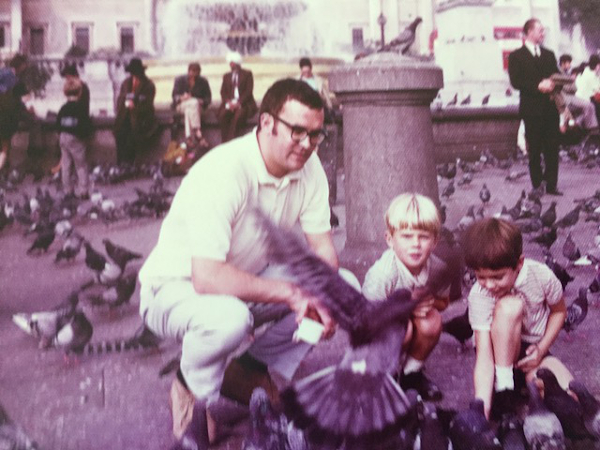
How to Create a Sex Scandal is a journey into the alchemy of mass hysteria, a voyage that these earlier sojourns prepared me for…
Elli:
The Origins of My Orientation: Journey to America
My parents emigrated from Iran to the U.S. New to America, we found ourselves in Columbia, Missouri, during the Iran Hostage Crisis, when Iranians weren’t exactly embraced. At an early age, I understood what it felt like to be othered (and hated, for that matter). So, I am deeply aware when these mechanisms are at play, both on the surface and underneath the surface. But during this time, I also learned the strength of community and family. There were a handful of African American and Asian-American families in our neighborhood who welcomed us into their homes and encouraged us to teach the community about our culture. My father went to our local elementary school and spoke to students about Persian history, and my mother entered the chili cooking competition. Her Persian fusion recipe became a smash hit. Not everyone embraced our differences, but some did, and that came from the courage it took to share our story.
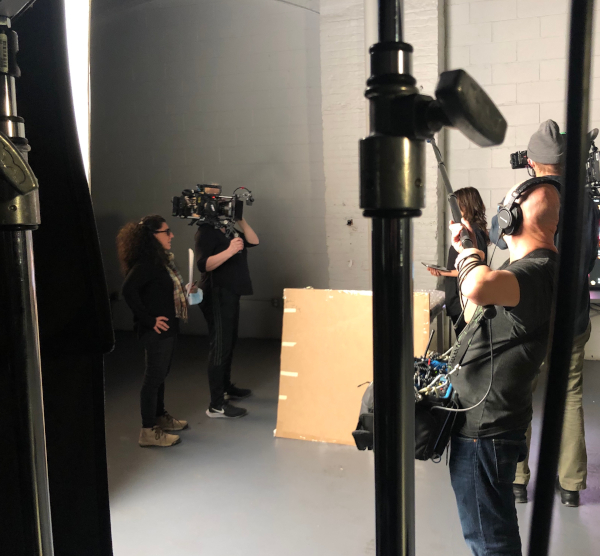
So, when I first read the story “The Girl Who Told The Truth” in Texas Monthly, I was immediately struck by Gabby Sones’ courage to share her story. She testified about her family’s involvement in an alleged child sex ring, which sent them to jail for life. But, at a young age, Gabby chose to publicly set the record straight, saying she had no recollection of these events, and, in fact, her memory was coerced. This meant admitting her own fault to clear her family’s name. It blew me away.
Julian:
Three Films My Dad Took Me to in a Movie Theater in the 1970s
Monty Python and the Holy Grail: Perhaps the greatest takedown of orthodoxy (and celebration of folly) ever printed on celluloid.
The Assent of Man: Bronowski’s epic 13-hour BBC documentary on the foundational truth of Darwin’s Theory of Evolution – and that that truth may have horrible outcomes. Genocides and witches are part of our DNA, tyrants reside in us all. The series was deemed of such importance that our family did not watch it broadcast on PBS (a black-and-white TV, as my dad deemed home color to be excessive), but we made a pilgrimage to see it projected in full, over multiple weeks, in its 16mm glory at the Seattle Science Center.
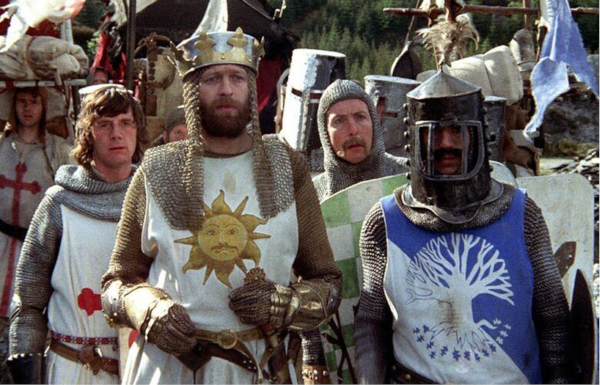
Brother Sun, Sister Moon: Franco Zeffirelli’s rococo retelling of the life of Saint Francis of Assisi. Late inning ’60s psychedelia meets environmental warrior saint. Donovan scored the U.S. release (it was meant to be Leonard Cohen – missed opportunities!). Now it seems ridiculously over the top, but at the time it fueled my teenage interest in a non-denotational anarchistic mysticism and general freakout version of enlightenment and unexpected heroes. Waiting to enter the theater at the now closed Harvard Exit, I beat my dad at chess for the first time.
This trifecta of unlikely films, in retrospect, have a “fearful symmetry,“ a heretical blend that echoes in my filmmaking: question the established order (that you may be part of it without knowing); evolution does not equate to “progress” – in fact, the opposite can be true; you may not be who you think you are, but despite the madness redemption can be found in unexpected places.
Elli:
A Film I Saw in Graduate School (That Was Not on the Curriculum)
Thirty-Two Short Films About Glenn Gould is a completely bold and lyrical film. It blows the three-act narrative structure to pieces by mixing narrative, documentary and animation to effectively tell a story in a completely unique way that stayed true to its subject matter.
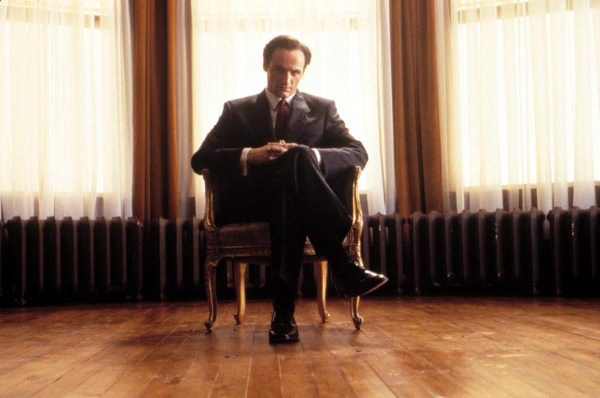
In Mineola, a “truth” was brought forward, a “truth” behind which an entire community rallied. And then, as several years played out, the “truth” quickly exposed itself as a lie. This lent an opportunity to take viewers on a journey that reflected what people experienced at the time. This framework became the narrative structure for the series. Instead of starting with the actual truth, we allowed the story to unfold as it happened – a journey that starts with belief and ends in doubt.
Julian:
Three Novels That Loosened My Sense of Self: Many were standard issue for their time, but to me they were psychic bombs, leaving me shell shocked, in a trench warfare with myself and the world.
Albert Camus’ The Stranger – Fast food for the young mind: it starts with a murder, but without cause or motive, and then delves into that unknown and does not resolve. The anti-Agatha Christie (whom I also liked); logic disrupted, no master plan, just local outbreaks – storms. Camus had an early gig as a meteorologist (my dad’s profession). Atmospheres, blinding suns and darkened skies/cells are key characters here – they occult meaning.
S.E. Hinton’s The Outsiders – This strange, appealing tribe of outsiders…I knew some kids in school like this – from the other side of the tracks; occasionally I ventured home with them and some became friends. They scared and attracted me, early documentary forages.
Émile Zola’s Germinal – Binged it in high school on a sick day with a raging fever – and it is a fevered dream, a delirious painting on an epic canvas. Its subject: all of us, now. Everything connects. Workers, anarchist, socialists, capitalists. Everything is on the line. What I do now is what matters …
I was first drawn to storytelling – fictions that held the promise of revealing truths about “us” and “them” writ large. Documentary films are of course non-fiction, but they employed tropes used in these novelist worlds; both are a mix of ethnography and emotion unspooled in a narrative. The Stranger and The Outsiders – similar titles, similar promises, but different approaches to the excavation of the alienated. Camus’ documents “a man imploding”; it observes but does not speculate – like a camera’s eye. Hinton also observes the rituals of the tribe: their hair, outfits, banter. But the real hook is delving into the characters’ emotional landscapes; the story is told from the inside out. Zola is a telescope and a microscope – the story is universal and local; I like documentaries that have a scale via the specific. Not surprisingly, I later studied English literature (and then film theory, and then I made films) – for me, reading fiction was the best creative boot camp I could have to tell narrative fact.
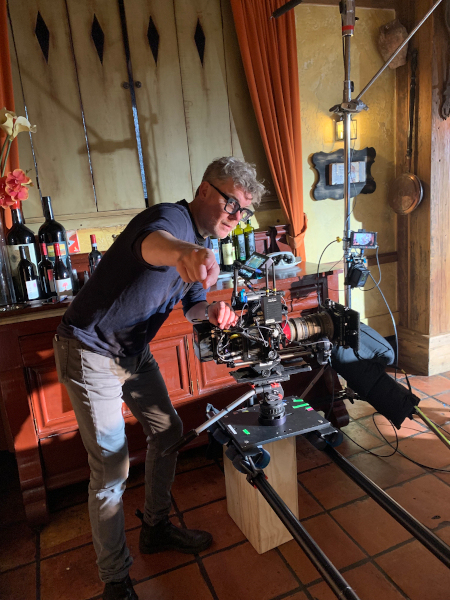
Flashforward: Of course, many later events further informed me as a documentary filmmaker: Seattle’s music scene in the ’80s; Cinema Village in Greenwich Village, whose cheap double features taught me film history (and who in later years screened my films); discovering NYU’s Performance Studies department with its eye-opening cross-futurization of anthropology, cinema and performance; making independent films on people who collect the artwork of serial killers, Collectors, and Daniel Paul Schreber’s Memoirs of My Nervous Illness; and having the privilege to produce a film with Errol Morris and two with Werner Herzog. But before these orientations, this origin of disorientation was foundational, and still fuels my desire to document the world in all of its uncertainties.
Elli:
I Believe We’re Still in a Flashback: In the ’90s, I was immersed in New York City and Los Angeles’ budding hip-hop scene. I discovered experimental filmmaking at Brown University, which fueled my desire to receive an MFA in Studio Art. During this time, I had the privilege to study under the female experimental filmmakers Leslie Thornton and Barbara Hammer. I was encouraged to shoot on 16 mm film, use an optical printer and cut on a Steenbeck. I was also encouraged to exhibit these films in fragmented forms in museum spaces. Making limited series for commercial streaming platforms makes this all seem like a distant past. But these experiences are indelible and often encourage me to “think different.”
Julian and Elli:
How to Create a Sex Scandal inspired both of us to tell a story that was out of the spotlight. Our influences are not identical, and it’s rare if we see a story in the same way. But shedding light on injustice, illuminating the mechanisms of power to show where and how the system fails, is at the heart of many of our films. This documentary is a case study of mass hysteria – how humans turn on each other. But it is also a case study of the courage of a family and one intrepid journalist who rose above to shine a light on a higher truth.


